usc
Latest

Xiaomi's Mi Mix 4 packs an under-screen camera in a ceramic body
The Mi Mix 4 is Xiaomi's slimmest ceramic unibody smartphone yet, featuring a 20-megapixel under-screen camera, thanks to advancements in AMOLED production.

Oppo's latest under-screen camera may finally be capable of good photos
Oppo unveiled its third-gen under-screen camera which, based on a sample shot it provided, appears to be surprisingly promising — no noticeable haziness nor glare. This is all thanks to some clever AI tricks and display circuitry tricks.
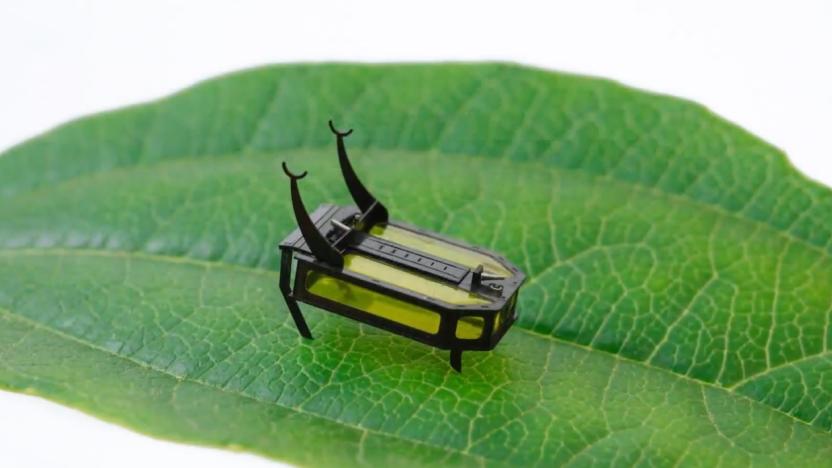
This tiny robotic beetle travels for two hours without a battery
This tiny, autonomous robotic beetle runs on liquid methanol.
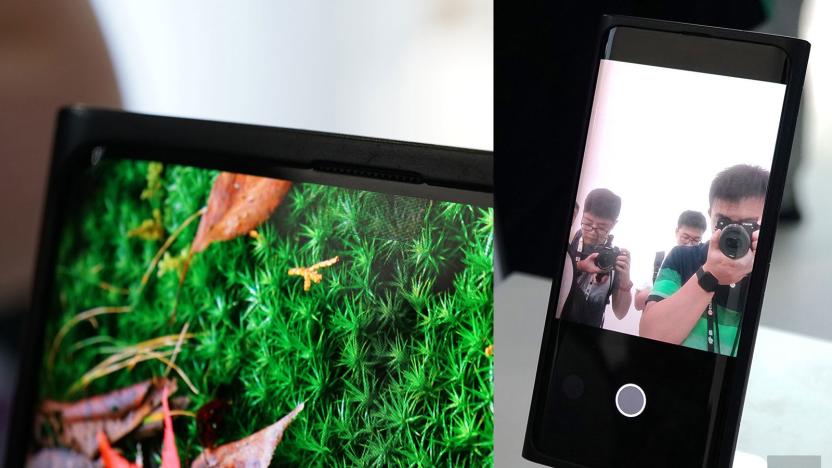
Oppo's under-screen camera is real and taking photos in Shanghai
Earlier this month, Oppo teased its upcoming under-screen camera tech with a quick and dirty video, and Xiaomi was quick to announce that it was working on something similar. Neither company explained how the tech worked back then, but today, our colleagues over at Engadget Chinese were able to give this new feature a spin at MWC Shanghai, and Oppo was also willing to shed some light on the how.
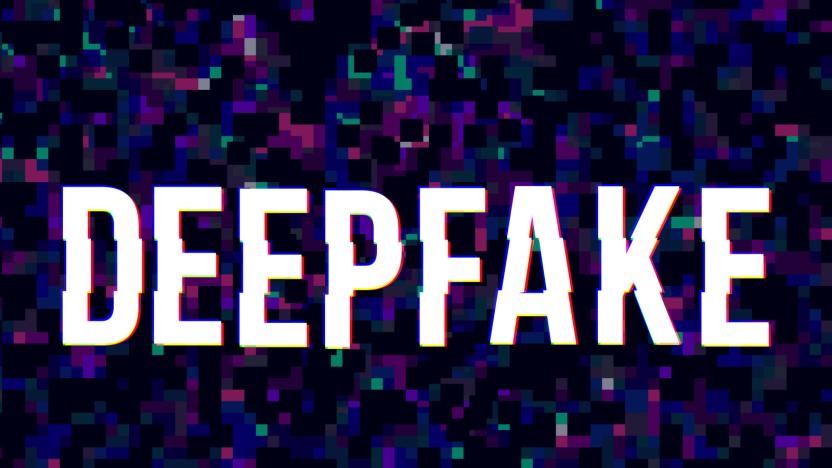
A new tool detects deepfakes with 96 percent accuracy
A new tool developed by researchers from the USC Information Sciences Institute (USC ISI) may prove to be a major help in the ongoing war against deepfakes. The tool focuses on subtle face and head movements as well as artifacts in files to determine if a video has been faked, and can allegedly identify the computer-generated videos with up to 96 percent accuracy, according to a paper published by the Computer Vision Foundation.

The evolution of cognitive architecture will deliver human-like AI
There's no one right way to build a robot, just as there's no singular means of imparting it with intelligence. Last month, Engadget spoke with Carnegie Mellon University associate research professor and the director of the Resilient Intelligent Systems Lab, Nathan Michael, whose work involves stacking and combining a robot's various piecemeal capabilities together as it learns them into an amalgamated artificial general intelligence (AGI). Think, a Roomba that learns how to vacuum, then learns how to mop, then learns how to dust and do dishes -- pretty soon, you've got Rosie from The Jetsons.
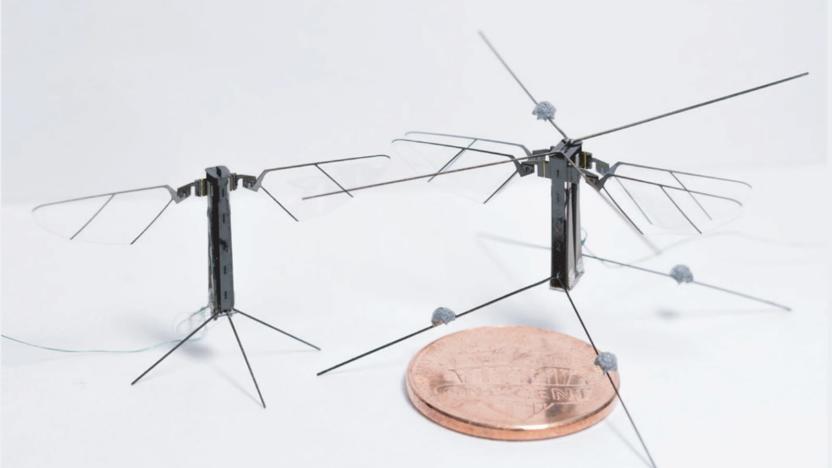
Scientists create a four-winged robot insect that flies with grace
It's difficult to make an insect-like flying robot -- realistic four-winged bots are typically too heavy, while lighter two-winged models tend to fly erratically. USC researchers have edged one step closer to the dream machine, however. They've created Bee+, a four-winged bot (pictured at right) that flies with more of the agility and poise of real insects while weighing just over 0.003oz. The trick was to drop earlier bimorph actuators, cantilevers made of two layers of piezoelectric material with a passive layer in between, with unimorphs that only have one piezoelectric layer. The four actuators combined weigh half as much as bimorphs would at just under 0.002oz, reducing the wing loading and significantly improving control.
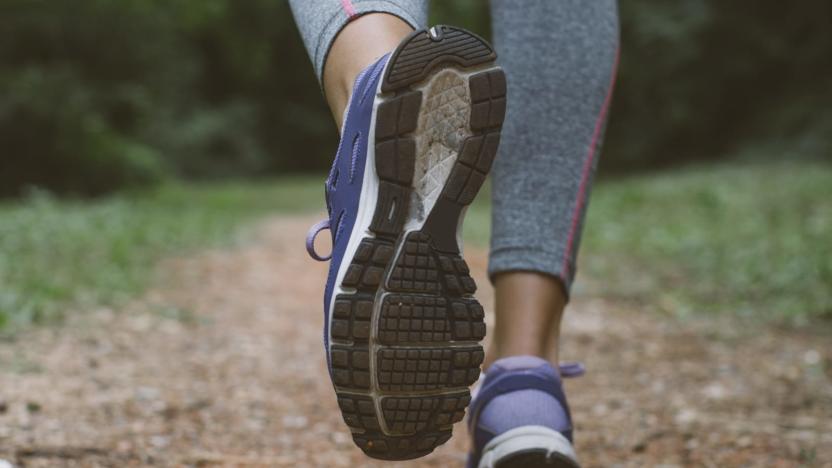
Self-repairing shoes may be a reality thanks to 3D-printed rubber
Shoes will invariably wear out with enough use, but scientists might have found a way to delay the shopping trip for their replacements. A USC team has created a self-healing 3D-printed rubber that could be ideal for footwear, tires and even soft robotics. The effort involves 3D printing the material with photopolymerization (solidifying a resin with light) while introducing an oxidizer at just the right ratio to add self-healing properties without slowing down the solidifying process.

AI could predict violent protests through Twitter analysis
Twitter has long been a cornerstone for organizing protests, but once demonstrators hit the streets, there's always a possibility that violence can erupt between activists and authorities. To help cut down on such battles, researchers from the University of Southern California's Brain and Creativity Institute are using artificial intelligence to try and predict when protests will turn violent.

A Nanjing Massacre survivor's story lives on digitally
On the morning of December 13th, 1937, Japanese troops pounded on the door of Xia Shuqin's family home in Nanjing, China. Thirteen people had taken shelter under this particular roof: Eight-year-old Xia, her mother and father, two grandparents, four sisters (one, four, 13 and 15 years old), and four neighbors. The Japanese army had ridden into the city on horseback that morning and faced little resistance; the Chinese army had made a full, chaotic retreat the prior evening, December 12th. When Xia's father answered the door, the Japanese soldiers immediately shot and killed him. They bludgeoned and killed her one-year-old sister. They raped and killed her mother. They killed her grandparents. They raped and killed her 13-year-old and 15-year-old sisters. And they bayoneted Xia three times in the arm and back.

'Chambara,' the split-screen samurai game born in a dorm
College dorms are a strange microcosm of adult life, offering close-quarters friendship, intellectual stimulation and the kind of freedom that comes with a prepaid meal card. Dorm life fosters in-person interaction, usually in tight spaces and on a limited budget. Basically, it's ideal for long multiplayer gaming sessions with a room full of good friends, loud music and fast food. It's no wonder, then, that the idea for Chambara, a samurai-infused local-multiplayer slash-fest, was spawned in the dorms at the University of Southern California.

ICYMI: Gravitational waves and holographic Holocaust memory
try{document.getElementById("aol-cms-player-1").style.display="none";}catch(e){}Today on In Case You Missed It: NASA's mission to figure out where black holes are located won't actually deploy until 2034, but the science behind the sound experiment is being worked on now. University of Southern California's Institute for Creative Technologies created a 3D video rig to capture people's memories, saving the video and sound mash-up for future generations to hear first-hand accounts of the Holocaust. The "In Good Company" shoe for turning off phone notifications automatically is here; in case you're interested in the human ancestor story, NPR has a good summary here. As always, please share any great tech or science videos you find by using the #ICYMI hashtag on Twitter for @mskerryd.

ICYMI: VR manipulation and drone delivery for 3D tissue
#fivemin-widget-blogsmith-image-919110{display:none;} .cke_show_borders #fivemin-widget-blogsmith-image-919110, #postcontentcontainer #fivemin-widget-blogsmith-image-919110{width:570px;display:block;} try{document.getElementById("fivemin-widget-blogsmith-image-919110").style.display="none";}catch(e){}Today on In Case You Missed It: Virtual reality researchers found a way to trick the brain into believing objects exist in the real world that only exist in the virtual one, by warping perception in a way you have to watch the video to believe.

NASA will attempt to develop drugs in space
A team of researchers from the University of Southern California and NASA's Jet Propulsion Laboratory are sending fungi aboard a SpaceX flight to the ISS on April 8th. Not to expose them to Mars-like conditions like an earlier experiment did, but to see if they can be used to develop medicine in space. See, fungi produce molecules called secondary metabolites that can be used to develop medicine. One good and familiar example is penicillin. However, scientists (including USC professor Clay Wang who's leading this project) found that in many cases, fungi can only generate secondary metabolites when they're put in stressful conditions. And space can provide an environment harsh enough to activate the production of those molecules.

ICYMI: AI bots, the wall-climbing drone and more
#fivemin-widget-blogsmith-image-676426{display:none;} .cke_show_borders #fivemin-widget-blogsmith-image-676426, #postcontentcontainer #fivemin-widget-blogsmith-image-676426{width:570px;display:block;} try{document.getElementById("fivemin-widget-blogsmith-image-676426").style.display="none";}catch(e){}Today on In Case You Missed It: Microsoft debuted a teenaged AI bot on Twitter to study human interactions and USC researchers are testing out bots with realistic faces for video chat support. Stanford's SCAMP is a UAV that can land and climb the sides of buildings. And the AxiDraw is a personal writing and drawing machine that will not screw up the decorative calligraphy on anything. We also enjoyed this survival video showing how to start a fire with a lemon. As always, please share any great tech or science videos you find by using the #ICYMI hashtag on Twitter for @mskerryd.

USC will publish its students' games on PlayStation and Xbox
The premise of college is that it's going to prepare you with what you need to survive in a real-world work environment, but whether or not it fulfills that is another matter altogether. To that end, the University of Southern California has launched its own publishing label for video games in an effort to help students experience every aspect of making a game -- all the way to getting it in the hands of people outside of academia and onto PCs, PlayStations and Xboxes. USC Games Publishing's Tracy Fullerton tells Wired that the imprint is akin to the MIT Press. "These are not books that are going to necessarily be on The New York Times best-seller list, but these are the books that are important, that need to be out there in the zeitgeist."

The future of entertainment's taking shape on a flying whale
When Alex McDowell tells me he's considering using virtual reality as "a new kind of literacy," as a way to educate using real science, it's clear that I'm dealing with a visionary. We're sitting beside The Leviathan Project, his "research project" that's taking temporary residence at the Sundance Film Festival's New Frontier exhibit, and dissecting the shifting parameters that define this brave new media world. McDowell's a film industry veteran who's worked on production design with the bold-faced names that've directed some of cinema's most unforgettable blockbusters. From the likes of David Fincher with Fight Club to Terry Gilliam with Fear and Loathing in Las Vegas and Steven Spielberg's Minority Report, McDowell's had a hand in guiding our imagination and steering our conception of the future for several decades.

Rat brains are basically wired up like miniature internets
Drawing on forty years of peer-reviewed research, a team of researchers from the University of Southern California have generated the world's first "wiring diagram" of a rat's central nervous system. And, as it turns out, their brain structures are uncannily similar to the internet's physical architecture. What's more, this could help us better understanding of our own neural organization. "The cerebral cortex is like a mini-Internet," USC professor and corresponding author of the study Larry Swanson said in a statement. "The Internet has countless local area networks that then connect with larger, regional networks and ultimately with the backbone of the Internet. The brain operates in a similar way."
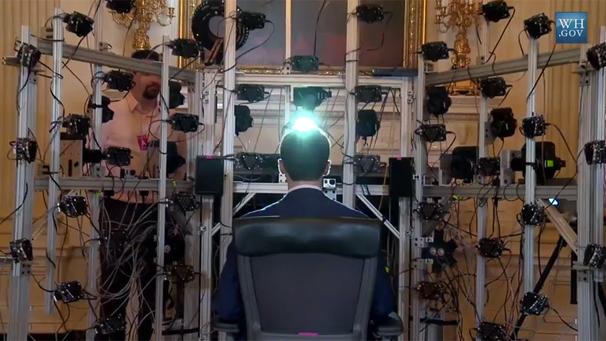
Here's how the first 3D-printed presidential portrait was made
One of the highlights of the White House's first-ever Maker Faire was another first: a 3D-printed portrait that recreated the President's head with uncanny detail. But just how did this eerily realistic image come to be? The White House is more than eager to explain, apparently. As you'll see in the clip below, the bust's creators (Autodesk, 3D Systems, the Smithsonian and the University of Southern California) surrounded President Obama with 50 LED lights, 14 cameras and handheld 3D scanners to capture every nuance of his skin. After that, they used high-resolution 3D printers to recreate the hyper-detailed model. It's not clear if this will become a custom for future US presidents. However, it's easy to see this technology becoming a valuable historical tool -- you could always know exactly what heads of state (and celebrities, for that matter) looked like in their prime.

USC finds that D-Wave's quantum computer is real, maybe
D-Wave has had little trouble lining up customers for its quantum computer, but questions have persisted as to whether or not the machine is performing quantum math in the first place. University of Southern California researchers have tested Lockheed Martin's unit to help settle that debate, and they believe that D-Wave's computer could be the real deal -- or rather, that it isn't obviously cheating. They've shown that the system isn't based on simulated annealing, which relies on traditional physics for number crunching. The device is at least "consistent" with true quantum annealing, although there's no proof that this is what's going on; it may be using other shortcuts. Whether or not D-Wave built a full-fledged quantum computer, the resulting output is credible enough that customers won't feel much in the way of buyer's remorse.










